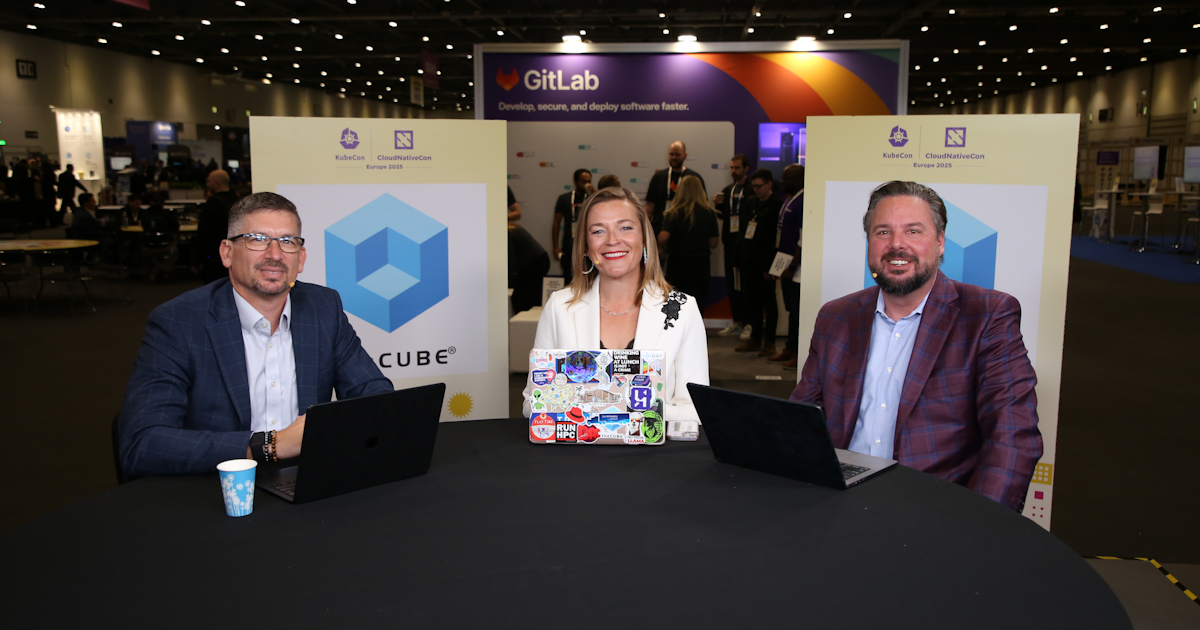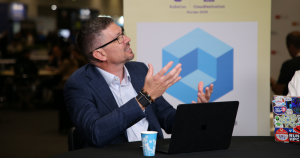 CLOUD
CLOUD
 CLOUD
CLOUD
 CLOUD
CLOUD
Cloud-native observability is reshaping how organizations approach complexity and skill gaps in information technology.
As companies navigate the evolving landscape of cloud-native technologies, significant challenges around observability, multicloud integration and talent acquisition continue to emerge. The growing reliance on multiple observability tools underscores an industry trend toward platform consolidation, driven largely by the demand for simplified operations and increased efficiency, according to theCUBE analyst Paul Nashawaty (pictured, left).

TheCUBE’s Paul Nashawaty talks about cloud-native observability.
“In our recent research, 75% of respondents indicated that they’re using six to 15 different observability tools, and they want to consolidate,” he said.
Nashawaty spoke with fellow analysts Savannah Peterson (center) and Rob Strechay (right) as a part of the day 1 keynote analysis at KubeCon + CloudNativeCon Europe, during an exclusive broadcast on theCUBE, SiliconANGLE Media’s livestreaming studio. They discussed how cloud-native observability is helping organizations manage increasing complexity, tool sprawl and talent shortages through platform consolidation, automation and broader language support. (* Disclosure below.)
Organizations today face increasing complexity as they scale cloud-native applications, a challenge compounded by significant gaps in available talent. Many businesses are shifting their hiring strategies from seeking specialists to preferring generalists, driven largely by necessity and resource constraints, according to Nashawaty. This trend underscores a broader industry shift toward automation to mitigate the impact of these skills shortages.
“What we find in research, 67% of respondents in our recent survey, indicating that they’re hiring IT generalists over specialists,” he said. “The reason why is because not that they don’t want specialists … they can’t find them.”
Furthermore, automation and artificial intelligence are increasingly filling critical gaps within platform engineering roles. Companies are becoming more dependent on AI to handle routine tasks traditionally done by junior hires or college graduates, creating potential future vulnerabilities in terms of experienced talent, Nashawaty explained.
“There’s a lack of hiring new college hires and using AI to do that job,” he said. “Here’s the risk: How do you get a seasoned developer and engineer if they never had a start? It’s not now; it’s five years from now when you’re looking for an experienced developer. Who’s educating and training them? Every organization is looking for somebody else to do that.”
Observability has also emerged as a central point in the effort to streamline complexity and unify operations. Businesses are increasingly seeking solutions that provide a single pane of glass through which multiple tools can integrate seamlessly, reducing management overhead and improving operational clarity, according to Peterson.
“One of the things I like is we get to see companies of varying size and maturity at this show,” she said. “I think that’s actually really refreshing because you’ve got the super eager, innovative builders trying to disrupt, to build those observability tools.”
Organizations are rethinking roles and workflows to address persistent skills gaps and reduce complexity, Strechay emphasized. There are challenges in finding qualified talent and there is a broader move toward consolidating tools into a more cohesive platform strategy.
“They talked a lot about the actual functions and the process, to your point about breaking down silos and how people are organizing,” Strechay explained. “They’re also scaling back the number of tools; they’re looking for more of a platform approach.”
Here’s the complete video interview, part of SiliconANGLE’s and theCUBE’s coverage of KubeCon + CloudNativeCon Europe:
(* Disclosure: TheCUBE is a paid media partner for KubeCon + CloudNativeCon Europe 2025. Neither Red Hat Inc. and Cloud Native Computing Foundation, the primary sponsors of theCUBE’s event coverage, nor other sponsors have editorial control over content on theCUBE or SiliconANGLE.)
Support our mission to keep content open and free by engaging with theCUBE community. Join theCUBE’s Alumni Trust Network, where technology leaders connect, share intelligence and create opportunities.
Founded by tech visionaries John Furrier and Dave Vellante, SiliconANGLE Media has built a dynamic ecosystem of industry-leading digital media brands that reach 15+ million elite tech professionals. Our new proprietary theCUBE AI Video Cloud is breaking ground in audience interaction, leveraging theCUBEai.com neural network to help technology companies make data-driven decisions and stay at the forefront of industry conversations.